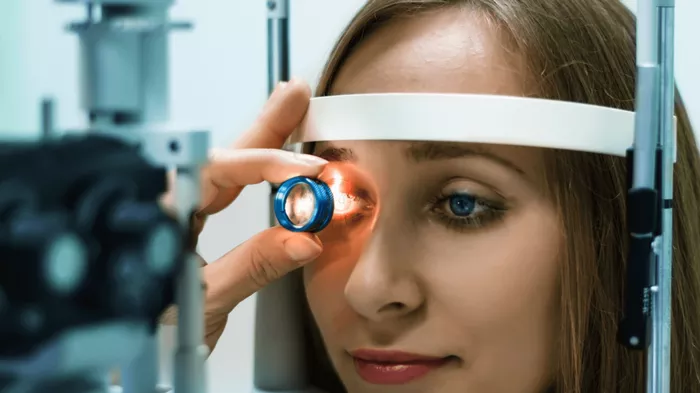Dry eyes are a common issue following laser eye surgery, causing discomfort and affecting the recovery process. Understanding the underlying causes is essential for both patients and practitioners to manage and mitigate this condition effectively. This article explores the 6 primary causes of dry eyes after laser surgery, providing a comprehensive overview for a professional audience.
Introduction to Dry Eyes Post-Laser Surgery
Laser eye surgery, including LASIK and PRK, has revolutionized vision correction, offering patients freedom from glasses and contact lenses. Despite its benefits, one prevalent side effect is dry eyes. This condition can range from mild discomfort to severe dryness, impacting the quality of life and visual outcomes. Here, we delve into the six primary causes of dry eyes after laser surgery, providing insights into their mechanisms and management strategies.
1. Disruption of Corneal Nerves
Nerve Damage During Surgery
During laser eye surgery, the corneal nerves, which are crucial for tear production and corneal sensitivity, are inevitably cut. These nerves stimulate the lacrimal gland to produce tears in response to eye surface dryness. Post-surgery, the disruption of these nerves can lead to decreased tear production, resulting in dry eyes.
Impact on Tear Reflex Arc
The corneal nerves are part of the tear reflex arc, which is responsible for detecting dryness and triggering tear production. When these nerves are severed, the reflex arc is impaired, reducing the eye’s ability to respond to dryness, thus exacerbating dry eye symptoms.
2. Inflammatory Response
Surgical Trauma Induced Inflammation
The corneal tissue undergoes a controlled form of trauma during laser surgery, which triggers an inflammatory response. This inflammation can affect the meibomian glands and other tear-producing structures, leading to reduced tear quality and quantity.
Chronic Inflammation Post-Surgery
In some cases, the inflammatory response persists beyond the initial healing phase, causing chronic inflammation. This ongoing inflammation can damage tear glands and other ocular surface structures, perpetuating dry eye symptoms long after surgery.
See Also: 6 Types of Strabismus Surgery
3. Altered Tear Film Composition
Changes in Tear Production
Laser surgery can alter the composition of the tear film, which consists of three layers: lipid, aqueous, and mucin. The surgery can disrupt the balance of these layers, leading to unstable tear film and rapid tear evaporation, contributing to dry eyes.
Impaired Lipid Layer Function
The lipid layer, produced by the meibomian glands, prevents tear evaporation. Surgery-induced inflammation can impair these glands, reducing lipid production and causing tears to evaporate quickly, leading to dry eyes.
4. Reduced Blink Rate
Post-Surgery Sensitivity Changes
Patients often experience increased sensitivity to light and discomfort following laser surgery, causing them to blink less frequently. A reduced blink rate can exacerbate dry eyes, as blinking is essential for spreading tears evenly across the eye surface and preventing evaporation.
Impact on Tear Distribution
Infrequent blinking can lead to poor tear distribution and inadequate tear film renewal, contributing to dry eye symptoms. Ensuring proper blink habits post-surgery is crucial for maintaining tear film stability.
5. Meibomian Gland Dysfunction
Gland Blockage and Atrophy
Laser surgery can exacerbate pre-existing meibomian gland dysfunction or trigger new issues. The meibomian glands, responsible for producing the lipid layer of the tear film, can become blocked or atrophy, leading to insufficient lipid production and increased tear evaporation.
Inflammation-Induced Dysfunction
Surgery-induced inflammation can also affect the meibomian glands, reducing their function and contributing to dry eyes. Managing inflammation is essential to preserve gland function and maintain tear film stability.
6. Environmental and Lifestyle Factors
Environmental Exposures
Post-surgery, patients may become more sensitive to environmental factors such as dry air, wind, and screen exposure. These factors can exacerbate dry eye symptoms by increasing tear evaporation and reducing tear production.
Lifestyle Changes
Changes in lifestyle post-surgery, such as increased screen time or exposure to air-conditioned environments, can also contribute to dry eyes. Educating patients on minimizing these exposures and adopting protective measures is vital for managing dry eye symptoms.
Management and Prevention Strategies
Artificial Tears and Lubricants
Artificial tears and lubricating eye drops can provide immediate relief for dry eyes. They help replenish the tear film and reduce discomfort. Patients should be advised to use preservative-free formulations to avoid potential irritation from preservatives.
Anti-Inflammatory Treatments
For patients with significant inflammation, anti-inflammatory treatments such as cyclosporine eye drops or corticosteroids may be prescribed. These medications help reduce inflammation, improve tear production, and alleviate dry eye symptoms.
Meibomian Gland Therapy
Therapies targeting meibomian gland dysfunction, such as warm compresses, lid massage, and lipiFlow, can help improve gland function and enhance the lipid layer of the tear film. Regular use of these therapies can prevent gland blockage and atrophy.
Lifestyle Modifications
Encouraging patients to make lifestyle modifications, such as taking regular breaks from screen time, using humidifiers, and wearing protective eyewear in windy conditions, can help reduce environmental triggers and manage dry eye symptoms.
Nutritional Supplements
Omega-3 fatty acid supplements have been shown to improve tear production and quality. Recommending these supplements to patients can be beneficial in managing dry eyes post-surgery.
Follow-Up Care
Regular follow-up appointments are crucial for monitoring dry eye symptoms and adjusting treatment plans. Patients should be encouraged to report any persistent or worsening symptoms to ensure timely intervention.
Conclusion
Dry eyes after laser surgery can significantly impact the recovery process and quality of life for patients. Understanding the causes and implementing effective management strategies are essential for mitigating this condition. By addressing nerve damage, inflammation, tear film composition, blink rate, meibomian gland function, and environmental factors, ophthalmologists can help patients achieve optimal outcomes and comfort post-surgery. Continuous patient education and follow-up care are vital components in managing and preventing dry eyes after laser surgery.
Related topics:

